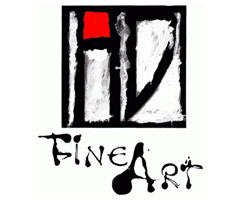Product Description
Tim Liddy, Lie Cheat and Steal (1971) The Game of Political Power 2006 Oil and enamel on copper, plywood back



TIM LIDDY (b. 1963) Missouri
“Lie Cheat and Steal” (1971) The Game of Political Power 2006
Oil and enamel on copper, plywood back
Signed in script: Tim Liddy “circa 1971” 2006, red circular ring
Provenance: William Shearburn Gallery (St. Louis, MO)
H: 12” x W: 9” x D: 2”
With his recent paintings, Liddy has both reasserted the construct of hyperrealist painting and developed a thoroughly unique advancement of that mode by extending the cultural reality of the indexed original. Based on the illustrated box lids of vintage board games, Liddy has recontextualized a subject, which evokes the underlying rules of life. Painted on copper or steel in the precise dimensions of the original, the metal is then manipulated to demonstrate the exact rips and tears from years of usage and includes trompe-l’oeil renditions of the scotch tape that might be holding the cardboard box together, the assorted stains, or the various graffiti of time. Liddy leaves no possibility of ambivalence, these works speak to a concurrent understanding of their original object identity and to themselves as works of art engaged in historical and psychological dialogue.
Tim Liddy, Lie Cheat and Steal (1971) The Game of Political Power 2006 Oil and enamel on copper, plywood back
You must be logged in to post a comment.
TIM LIDDY (b. 1963) Missouri
Tim Liddy, “Learn to Design” Kit with Charles and Ray Eame, Presented by Herman Miller Furniture Company, Zeeland, Michigan, Set pieces are moulded by Zenith Plastics Co., Gardena, California
Signed: Tim Liddy (red circle), To Everyone at HD! 2012
With his recent paintings, Liddy has both reasserted the construct of hyperrealist painting and developed a thoroughly unique advancement of that mode by extending the cultural reality of the indexed original. Based on the illustrated box lids of vintage board games, Liddy has recontextualized a subject, which evokes the underlying rules of life. Painted on copper or steel in the precise dimensions of the original, the metal is then manipulated to demonstrate the exact rips and tears from years of usage and includes trompe-l’oeil renditions of the scotch tape that might be holding the cardboard box together, the assorted stains, or the various graffiti of time. Liddy leaves no possibility of ambivalence, these works speak to a concurrent understanding of their original object identity and to themselves as works of art engaged in historical and psychological dialogue.
JOSEF RIEDEL GLASWERKS Dolni Polubny, Bohemia
BAKALOWITS SÖHNE Vienna
Carafe c. 1900
Clear crystal engraved with a peacock feather (gilding)and inset with an applied colored-glass peacock eye
For more information see: Das Böhmische Glas 1700-1950, Band IV Jugendstil in Böhmen, Alena Adlerová, c.s. (Passau: Passauer Glasmuseum, 1995) pp. 202 – 210.
Carafe: H: 10 ½” D of base: 6 “
Price: $3,650

Reviews
There are no reviews yet, would you like to submit yours?